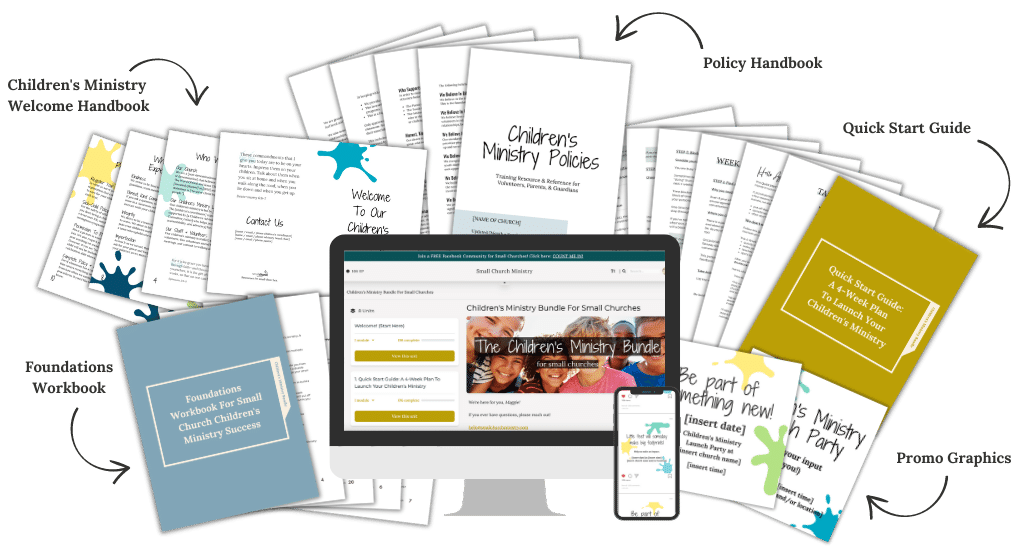This post may contain affiliate links, which means I may earn a small commission from purchased products at no additional cost to you. See my full disclosure here.
Did you know the details of the Easter story can cause overwhelming stress and anxiety in children? Unfortunately, not many of us realize the potential for trauma and harm that can be done to our kids. This includes how we tell about the events of Good Friday, the Crucifixion, and the Resurrection of Christ.
We should consider the age and maturity levels of our kids as we share content describing the events that took place leading up to and including Jesus’s death. (This includes stories, pictures, and movies.) Our goal should be to help our children understand the story of Jesus on their level. Let’s make sure we’re presenting the gospel with the love of Christ and not based on condemnation, guilt, or shame.
Focus the story on the perspective of God’s love and wanting to draw us closer to Him. This can be much more effective than the alternative of “You’re the reason this happened to Jesus.” Sometimes, children can be overwhelmed with the idea that they somehow killed Jesus. They may not be able to process that concept. Our sins didn’t kill Jesus; Jesus chose to die to pay for our sins because of God’s grace and His overwhelming love for us.
Keep reading for tips to better tell the Easter story and how to help children process the realities of Jesus’ death and resurrection.
To begin to answer this question, let’s start with a quick foundation.
What Is Trauma?
Trauma isn’t what happens to us; rather, it’s what happens inside of us left as an imprint of an overwhelming event/experience(s). This imprint affects us as our God-given responses (fight, flight, freeze) attempt to survive and find safety. Commonly, we think of wars, accidents, weather-related catastrophes, assaults, abuse, and sudden deaths as traumatic. Other less common examples result from ongoing and chronic situations, i.e., growing up in an alcoholic home, experiencing repeated bullying, or witnessing others suffer.
Elements present in overwhelming situations are those that cause us to feel intense fear, helplessness, and a sense of being without choice and without voice.
Two recent examples of overwhelming situations imprint in our memory and body in a distinct way because of this:
- January 2, 2023, an NFL football game between the Buffalo Bills and the Cincinnati Bengals when player Damar Hamlin collapsed on the field
- The main character in the movie, Otto, makes several suicide attempts.
These are examples of situations adults walked away from having difficulty processing. They went to the movie or sat down to watch a fun football game, and the worst happened without a voice or choice in the matter; they felt helpless to do anything to change the situation.
Kids Feel This Overwhelm, Too!
Their little bodies have not had the time and experiences built that bring resilience to pain and suffering. If we consider the message, images, and language around the Easter story, it’s no wonder many kids become overwhelmed with it all! Therefore, they need wise adults to help them process and move through the trauma.
The Hard Truth About Trauma
Each individual is impacted by trauma in different ways depending on various factors. This includes family of origin, personality, and life events. We cannot keep those around us from being traumatized 100% of the time because trauma is a result of living in a sin-sick world. This means that you can do everything “right” and someone you love can still end up impacted by trauma. It is not necessarily a failure on your part as an adult if a child you love becomes traumatized. Equally true, what traumatizes one child, may not impact another child in any memorable way.
For ministry leaders, this means we gain information to make better choices in the way we present truths of our faith in age-appropriate ways and provide ways for children to process the more difficult ones. Doing so ensures we do our part to help kids process the powerful account of Jesus, in the best way possible, should the Easter narrative overwhelm them.
Good Friday & Easter Can Be Traumatic
Looking back at the elements of a traumatic circumstance, we have to be honest: Easter is traumatic.
That a God-man, completely sinless and without fault, took on the world’s sins as His own, enduring the most cruel and gruesome death known to humanity, should leave us all horrified. We couldn’t stop it. It wasn’t our intentional choice. Yet, religious leaders commonly make it a point to let everyone, including children, know they were the ones who put God’s son on the cross.
This leaves everyone feeling helpless, horrified, without choice, and without voice.
It’s no wonder children respond with confusion and shame: “I put Jesus’ body on the cross?!?!” Then they declare with wide eyes, “But I wasn’t even there!”
Many Christian (and non-Christian) adults look back and vividly recall an angry ministry leader looking at them with disgust saying, “You put Jesus on the cross!”
A child feeling horror at this idea is the right response!
It makes sense for a child to be traumatized thinking they put Jesus on the cross or to be traumatized by pictures of the final days of Jesus and His death. Their childlike faith leaves them open to being deeply impacted by this truly horrific act of love.
So how do we handle this central truth of our Christian faith in an age-appropriate way?
Here are a few concrete ways to tell young children about the Easter story without traumatizing them.
How To Tell The Story Of Easter Without Traumatizing Kids
1. Gain Knowledge
You are already doing this by reading this article. Once the reality of Easter as being traumatic is on your radar, you will begin to approach the way your ministry engages in Easter differently.
2. Simplify
Use age-appropriate language and imagery. Just as you wouldn’t set a 3, 5, or 8-year-old in front of a video game or movie labeled “Mature Audience” or “Restricted.” Consider with parents and staff/leaders what Easter imagery is appropriate for the children in your church. Consider how your faith community wants to introduce their children to the message of the cross and the manner in which you speak to children when sharing that message. (Please, at a minimum, don’t look disgusted at the children for putting Jesus on the cross.)
3. Process & Validate Their Feelings
Easter is both sad and happy. This is a key thought regarding Easter. Say this in your lesson time. Take notice of the emotions happening within the children during your lesson if you choose to focus on Jesus’ crucifixion. Tell them how you feel and ask about their feelings.
Mirroring and reflecting give voice to emotions and are vital to helping children move through their pain, so it doesn’t get stuck. Say, “This makes me feel sad. How do you feel about this, James?” or “I can see this makes you feel upset. What’s upsetting you most, Emily?” You’d be surprised by what they might share.
4. Provide Processing Exercises
Art, music, and body movement are excellent tools to use to process emotions. This is essential regardless of the emotion. Children provide ample opportunities for this to happen organically, and we’d be wise adults to take note and follow them! Choose various exercises and activities during the weeks leading up to Easter and afterward to process emotions that may come up during the story.
(i.e., Use vibrant colors when Jesus enters Jerusalem. Use colorful, flowing ribbons instead of palm branches –– wave them all around –– dance, move in circles –– let children be children and celebrate. Provide the same opportunity on the morning of Easter Sunday –– Jesus is alive! This is good news! Allow children to actively participate in this remembrance.)
5. Be Close
A kind and gentle physical presence brings reassurance to a child’s heart. Be aware of the potential of difficult feelings (often expressed in “acting out” behaviors such as hitting, yelling, etc.) and patiently provide a steady, calm, and humble presence. Offer an extra side hug. Use a positive, steady, reassuring, gentle tone of voice when responding to their worries and sadness. This helps children feel secure.
6. Model A Healthy Posture Toward Grief & Suffering
Adults often dismiss the sadness of the cross because we struggle to sufficiently answer our own questions about it. Why did the Son of God have to die? Couldn’t have God made another way!? I still ask this question! When children ask difficult questions about Easter or about Jesus’s words during that time, don’t pretend they shouldn’t ask, try to quiet them, or slap some cliché Bible verse about praise on it. Acknowledge their emotions and let them know it’s okay to feel them. If they are old enough (10+), you may choose to introduce them to the process of lamenting. Writing a personal lament over difficult feelings surrounding Easter is an appropriate and engaging way to help an older child process his/her questions. Writing a lament with them is even better!
7. Focus On Our Hope
While the truth of Jesus’ last days is painful, our real focus and the focus Christ wanted His disciples to have then and us to have now is the hope and freedom that His death and resurrection on the third day made possible!
Looking for a step-by-step to starting or restarting your children’s ministry?
Check out the Children’s Ministry Bundle For Small Churches!

Remember – Jesus’ Resurrection Gives Hope!
One of the greatest central truths of our Christian faith: Jesus did not stay dead!
The death and resurrection of Jesus Christ ushered in the opportunity for our greatest healing! One very real day, we will be completely whole, free from suffering, with Him in the most beautiful, glorious place we can ever imagine!
Being traumatized here on earth isn’t without hope. There is healing on this side of heaven as we learn to move through the pain and suffering with wisdom and community. For children, a trauma-informed and trauma-responsive adult is a wise helper, and your small church can be the place of community –– the very safest place a child can possibly learn about Easter.
May we all, children and adults alike, experience the reality of the hope Christ offers us through remembering the greatest gift we have ever been offered: Jesus conquering trauma and allowing us access to freedom from all pain and eternal life in heaven, surrounded by peace.
Disclaimer
*If a child you know (and/or minister to) exhibits excessive anxiousness, inability to sleep well or increased waking in the night, an increase of sadness, isolation/quietness, or increased acting out, after seeing traumatic accounts of the Easter story (or after any traumatic event/situation), please seek professional evaluation and advice.
Read More
Share The Gospel At Easter Egg Hunts
Help Easter Visitors Feel Welcome

Kristen (Joy) Humiston is a certified coach specializing in the area of faith + mental health + trauma recovery. She is passionate about serving the hurting Christian woman who, through crisis and/or chronic life stressors, has found herself disoriented and disillusioned in her soul. Kristen has worn the identities of “pastor’s wife” and “pastor’s kid” and knows the deep wounding of trauma within the walls of the church and outside of them as well. In her healing journey, God has restored her joy and called her to use her experiences and training to serve others who are walking on a similar path. It is a joy and honor to walk alongside other Christian women on their own healing journey. Continually learning to live from a place of rest, Kristen enjoys a good book, chocolate, and any quiet place she can find in her busy household of 8.

